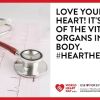- 1-Understanding-Heart-Disease-and-Chemical-Exposures
- 2-Common-Chemical-Exposures-Affecting-Heart-Health
- 3-How-Chemical-Exposures-Contribute-to-Heart-Disease
- 4-Real-Life-Cases-Illustrating-the-Impact
- 5-Preventive-Measures-and-Risk-Reduction
- 6-Professional-Resources-and-Support
1. Understanding Heart Disease and Chemical Exposures
Heart disease is a leading cause of death globally, and emerging research shows that chemical exposures can significantly influence cardiovascular health. Chemicals found in everyday environments—such as air pollutants, heavy metals, and industrial toxins—may increase the risk of developing heart disease or worsen existing conditions.
Understanding the relationship between heart disease and chemical exposures is essential for both prevention and management. Unlike traditional risk factors like diet and exercise, chemical exposures are often less obvious but can have profound, long-term effects on heart health.
Raising awareness about these risks helps individuals make informed decisions about their environment and lifestyle to protect their cardiovascular system.

2. Common Chemical Exposures Affecting Heart Health
Several types of chemical exposures have been linked to increased cardiovascular risk. Air pollution, especially fine particulate matter (PM2.5), is associated with inflammation and arterial damage that can lead to heart attacks and strokes. Heavy metals like lead and mercury, often found in contaminated water or food, contribute to hypertension and oxidative stress.
Additionally, chemicals such as polychlorinated biphenyls (PCBs), used in industrial applications, and certain pesticides have been linked to adverse effects on lipid metabolism and blood vessel function. Even everyday products containing volatile organic compounds (VOCs) can pose risks with prolonged exposure.
Recognizing these common chemical threats is the first step toward mitigating their impact on heart health.
Atlanta Heart Specialists
atlanta heart specialists
4375 Johns Creek Pkwy #350, Suwanee, GA 30024, USA

3. How Chemical Exposures Contribute to Heart Disease Development
Chemicals can damage the cardiovascular system through multiple biological pathways. Inhalation of polluted air triggers systemic inflammation, increasing arterial plaque formation. Heavy metals interfere with endothelial function, leading to hypertension and reduced blood flow.
Some chemicals disrupt hormonal balance or increase oxidative stress, both of which are key contributors to heart disease progression. Chronic exposure may accelerate atherosclerosis and impair the heart’s ability to pump effectively.
These mechanisms underline why environmental factors must be considered alongside lifestyle and genetic risks in comprehensive heart disease care.
4. Real-Life Cases Illustrating the Impact of Chemical Exposures on Heart Disease
Consider the story of a factory worker exposed to airborne solvents over many years who developed early-onset hypertension and coronary artery disease. Despite a healthy lifestyle, his chemical exposure played a decisive role in his heart condition, highlighting the need for workplace safety and monitoring.
Another case involves residents in areas with high air pollution levels experiencing elevated rates of heart attacks and strokes. These community health patterns emphasize the broader public health challenge chemical exposures pose to heart disease prevention.
Such real-life examples drive home the critical importance of environmental awareness in managing heart disease risks.
5. Preventive Measures and Risk Reduction Strategies
Reducing chemical exposures is key to protecting heart health. Simple actions include avoiding smoking and secondhand smoke, using air purifiers indoors, and choosing foods with low contamination risk. In occupational settings, following safety protocols and using protective equipment minimize hazardous exposure.
Regular health screenings that consider environmental factors can help detect early signs of chemically induced cardiovascular damage. Advocating for cleaner air policies and safer chemical regulations also benefits individual and community heart health.
Combining these preventive strategies with healthy lifestyle choices offers the best defense against heart disease influenced by chemical exposures.
6. Professional Resources and Support for Managing Heart Disease and Chemical Exposure Risks
Managing the complex interplay between heart disease and chemical exposures requires expert guidance. Cardiologists and environmental health specialists can offer personalized assessments and interventions. Platforms like HeartCare Hub provide trusted information, products, and services tailored to help patients minimize exposure and improve cardiovascular outcomes.
Access to support networks and educational resources empowers patients and caregivers to stay informed and proactive in heart disease management related to environmental factors.
By integrating clinical care with environmental awareness, individuals can better navigate and mitigate the risks posed by chemical exposures.





















Deborah Heart and Lung Center
deborah heart and lung center
200 Trenton Rd, Browns Mills, NJ 08015, USA